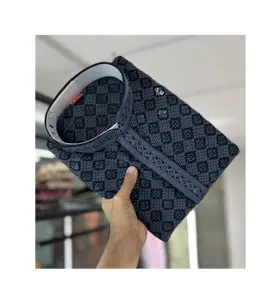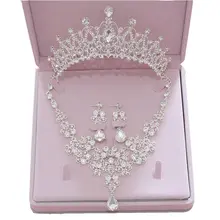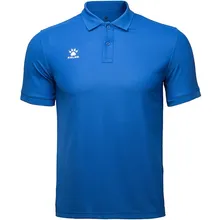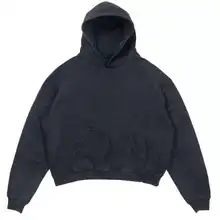Popular in your industry


























































































































































Top categories
About kurta
The term kurta signifies a versatile piece of clothing that has woven itself into the cultural attire of South Asia. Traditionally worn by men, the kurta has evolved into various styles and forms, including the kurta for men, kurta dress for men, and kurta pajama. It is a garment that transcends age, occasion, and geography, making it a staple in wardrobes across the region and beyond.
Types and Variations of Kurta
The kurta comes in numerous styles, each serving different occasions and preferences. The pathani kurta, for instance, is a robust design often paired with loose trousers, known for its straight cut and often seen in earthy tones. The kurta pajama for men is a classic combination suitable for formal events, with the pajama providing a comfortable yet traditional look. Women have embraced the kurta as well, with short kurtis for women and cotton kurta for women being popular for their comfort and ease of wear. The chikankari kurta, with its intricate hand embroidery, is a testament to the craftsmanship that goes into kurta design. The short kurta for men is a modern twist on the classic, offering a casual yet chic look, often chosen for less formal occasions. The black kurta for men stands out for its universal appeal, easily paired with jeans or traditional pajamas for a range of events.
Structural Features and Closure Types
The structure of a kurta is relatively straightforward, yet it allows for a variety of features and closures. Collars can range from a simple O-neck to a more traditional mandarin collar. The closure types are equally diverse, with options like the single button and covered button providing both functionality and style. The black kurta for men often features a sleek stand collar, emphasizing a sharp and elegant silhouette. The length of the kurta also varies, with some extending just below the knee, while others may reach the ankles for a more traditional look. The side slits are a functional element, offering ease of movement, and the cuffs can be simple or adorned with buttons or embroidery for added detail.
Material and Fabrication
Kurtas are made from a variety of materials, catering to different climates and personal preferences. The cotton kurtis for women and white kurta for women are sought after for their breathability and soft texture, making them ideal for warmer climates. Woolen kurtas provide warmth during cooler seasons. Linen kurtas offer a lightweight and airy feel, perfect for humid conditions. The choice of material also affects the drape and fit of the kurta, with fabrics like satin giving a more fluid silhouette. The benefits of using such diverse materials include comfort, suitability for different weather conditions, and ease of care.
Business Usages and Applications
Kurtas have found their place not just in personal wardrobes but also in the business world. In the hospitality industry, for example, staff often wear kurta and pajama as a part of their uniform to offer a traditional welcome to guests. In the fashion retail sector, the chikankari kurta for women is a high-value item due to its handcrafted nature, appealing to customers looking for authentic ethnic wear. The kurta's adaptability also makes it a preferred choice for corporate events with ethnic themes, cultural festivals, and as part of school uniforms in certain regions.
Functions
The primary function of the kurta is to serve as a versatile piece of clothing that can be worn on various occasions. From daily wear to special events, the kurta provides comfort without compromising on style. The kurta pajama is particularly known for its functionality during festive occasions, allowing for ease of movement during celebrations. The short kurta for women functions as a casual top that can be paired with jeans or skirts, making it a multifunctional piece in a woman's wardrobe.
Features
The distinct characteristics of kurtas include their loose fit, which ensures comfort and airflow, making them ideal for hot climates. The chikan kurta is particularly known for its unique hand-embroidered features, which showcase the rich cultural artistry of the region. The cotton kurta for women often features a blend of traditional and contemporary designs, with prints or embroidery that add to its aesthetic appeal. These features set kurtas apart from other garments, offering a blend of tradition, comfort, and style.
Benefits
The kurta offers numerous benefits, including its versatility and ability to cater to a wide range of personal styles and body types. It meets the need for a garment that is both comfortable and formal, without being restrictive. The white kurta for women is particularly beneficial in hot climates, reflecting sunlight and keeping the wearer cool. The ease of maintenance, especially for materials like cotton, is another significant benefit, as it allows for regular wear without extensive care.
How does the kurta fit into modern fashion?
The kurta has seamlessly integrated into modern fashion by adapting to contemporary styles while maintaining its traditional roots. Designers have reimagined the kurta in various forms, such as the short kurta for women and the white kurta ladies wear, which align with modern trends and preferences. The fusion of traditional and modern elements in kurtas has led to their increased popularity on global fashion stages.
What should one consider when selecting a kurta?
When selecting a kurta, one should consider the occasion, climate, and personal style preferences. The material should offer comfort and be appropriate for the weather, while the design should align with the event's formality. Additionally, the fit and size are crucial for a flattering silhouette. It's also important to consider the care and maintenance of the fabric, ensuring the kurta remains in pristine condition over time.
How can businesses incorporate kurtas into their inventory?
Businesses looking to incorporate kurtas into their inventory should consider the diversity of their clientele and the versatility of the kurta. Offering a range of styles, from the kurta pajama to the chikankari kurta for women, can cater to various tastes and occasions. It's also beneficial to include kurtas made from different materials and in a wide range of sizes to accommodate all seasons and body types. By doing so, businesses can ensure they meet the demands of a global market, making the most of the kurta's universal appeal.



























































